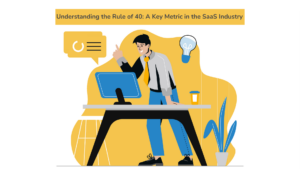One of the most used buzzwords in the start-up ecosystem is scalability. But this doesn’t make it less important.
In his last TED talk in April 2022, Elon Musk elaborated lengthy on the importance of being able to deliver at scale, being the most important factor on why TESLA has been successful, while other car manufacturing start-ups haven’t. In this context, he didn’t claim to be the greatest product visionary, but rather being the person that knows most about manufacturing on the planet (even though these disciplines are interlinked).
As scalability is a science by itself, as recently outlined by John A. List in his book “The Voltage Effect – How to make Good Ideas Great and Great Ideas Scale”, we want to dig into one important (among others) indicator of scalability for SaaS-businesses – the gross margin.
In the following, we define scalability as a system’s readiness to handle growth. It demonstrates a company’s ability to increase production or accommodate more customers with marginal additional costs.
What is the gross margin?
The gross margin is the revenue minus the cost of goods sold (COGS) divided by revenue, whereas the COGS are essentially the cost to deliver the service. It basically reflects the cost that emerge with every additional unit delivered.
The gross margin is usually not readily available in the German-speaking region, as companies usually work with the so call “Gesamtkostenverfahren”, which is per default the standard when using DATEV or other accounting software. In contrary, in the Anglo-Saxon world the “Umsatzkostenverfahren” is more common, which works with gross margins and COGS.
We believe that the latter is much more helpful for understanding what’s going on and have posted an article on how to transform your P&L from the German standard into a format that is much better for company steering purposes.
Both formats can be used complementary, as we do at ValueWorks and we highly recommend to introduce it as soon as possible.
What are COGS in software companies?

Why does gross margin matter?
- With higher gross margins higher profits can be invested in Sales & Marketing and Research & Development
- It indicates that the margin is not eaten up by extensive on-boarding cost (be it project management and/or implementation)
- Economies of scale apply for the technical architecture (decrease with more customers)
Analysing the gross margin

Potential levers to improve the gross margin (detailed blog articles coming on these topics)
- Establish gross margin calculation in your company
- Transform your technical architecture from single tenancy to multi tenancy (serverless)
- Increase automation of your Implementation and DevOps processes
- Reduce technical implementation team of your company by transitioning to self-service and no-code elements to minimize your workload and enable the customer to take over your activities
- Improve on-boarding process (e.g., guided trials, monetary incentives to finish on-boarding quickly, etc.) (detailed article on customer success improvement levers upcoming)







